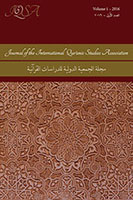The seemingly ungrammatical wording of Q Ṭā-Hā 20:63 ʾinna hādhāni la-sāḥirāni has been cause for much debate, both in traditional Muslim sources as well as in modern discussion. This paper sets out to reevaluate the grammar of the various reading that are present by comparing them not against the normative grammar as it is established by the medieval grammarians, but rather by comparing its grammar to other, comparable construction in the Qurʾān. By analyzing this Qurʾānic verse within its intra-Qurʾānic parallels it is argued that the minority reading ʾin hadhāni la-sāḥirāni is the original intended reading of the ʿUthmānic text, while the grammatically problematic majority reading ʾinna hādhāni la-sāḥirāni is to be understood as an approximation to popular non-ʿUthmānic readings. Through the comparison with other verses, it is also shown that we may gain deeper understanding into verses of constructions of the type found in Q al-Ṭāriq 86:4 (wa-ʾin kullu nafsin la-mā ʿalayhā ḥāfiẓun) and shed light on some of the competing canonical readings in these verses.
Download Resource
The seemingly ungrammatical wording of Q Ṭā-Hā 20:63 ʾinna hādhāni la-sāḥirāni has been cause for much debate, both in traditional Muslim sources as well as in modern discussion. This paper sets out […]

